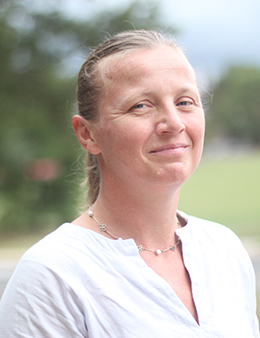With over 3,000 sq. ft. of lab space, our facilities support advanced environmental sample analysis and research on organic and inorganic pollutants, microbial processes, and sustainable treatment technologies.
Our environment and resources engineering research is dedicated to tackling the most pressing environmental challenges in pollution control, resource recovery, water sustainability, and ecosystem resilience. By integrating advanced scientific methods, engineering solutions, and resource management strategies, CEE researchers aim to safeguard public health, protect natural resources, and develop sustainable solutions for environmental and water-related challenges.
Our research encompasses a broad spectrum of environmental engineering and water resource topics, leveraging cutting-edge experimental, computational, and field-based approaches.
Active research areas include:
With over 3,000 sq. ft. of lab space, our facilities support advanced environmental sample analysis and research on organic and inorganic pollutants, microbial processes, and sustainable treatment technologies.
The Maryland Water Resources Research Center develops new technology and more efficient methods for resolving local, state, and national water resources problems. A member of the National Institutes for Water Resources, the center trains water scientists and engineers, works with local communities, and funds research.
The Center for Disaster Resilience assists individuals, communities, and governments in understanding and reducing the catastrophic effects of natural hazards. Specializing in interdisciplinary methods, the center can help communities integrate the complex science and engineering of risk analysis with policies, codes, and environmental protection efforts.
CEE faculty and researchers have access to a range of high-performance computing resources, including Zaratan, a flagship cluster designed for large-scale parallel computing. Zaratan comprises over 380 nodes, each equipped with dual-socket AMD Milan processors (128 cores per node). Twenty nodes are additionally outfitted with four Nvidia A100 GPUs each. All nodes feature a minimum of 512 GB of RAM, with six large-memory nodes offering 2 TB of RAM. The cluster is interconnected via HDR-100 InfiniBand (100 Gb/s) and includes 2 PB of high-speed BeeGFS scratch storage.

|
Marya AndersonSenior Faculty Specialist301-405-4828 | morf@umd.edu Profile |

|
Natasha AndradeAssociate Chair for Undergraduate Programs301-405-1171 | nandrade@umd.edu Profile |

|
Ahmet H. AydilekProfessor301-405-2692 | aydilek@umd.edu Profile |

|
Bilal M. AyyubProfessor301-405-1956 | ba@umd.edu Profile |

|
Kaye L. BrubakerDirector, Maryland Water Resources Research Center301-405-1965 | kbru@umd.edu Profile |

|
Allen P. DavisAssociate Chair for Faculty Development and Advancement301-405-1958 | apdavis@umd.edu Profile |

|
Jongwan EunAssistant Professor| jeun1@umd.edu Profile |

|
Birthe KjellerupProfessor301-314-1535 | bvk@umd.edu Profile |

|
Guangbin LiAssistant Professor301-405-1262 | gli2019@umd.edu Profile |

|
Deb NiemeierClark Distinguished Chair Professor301-405-6266 | niemeier@umd.edu Profile |

|
Alba TorrentsBen Dyer Centennial Chair301-405-1962 | alba@umd.edu Profile |